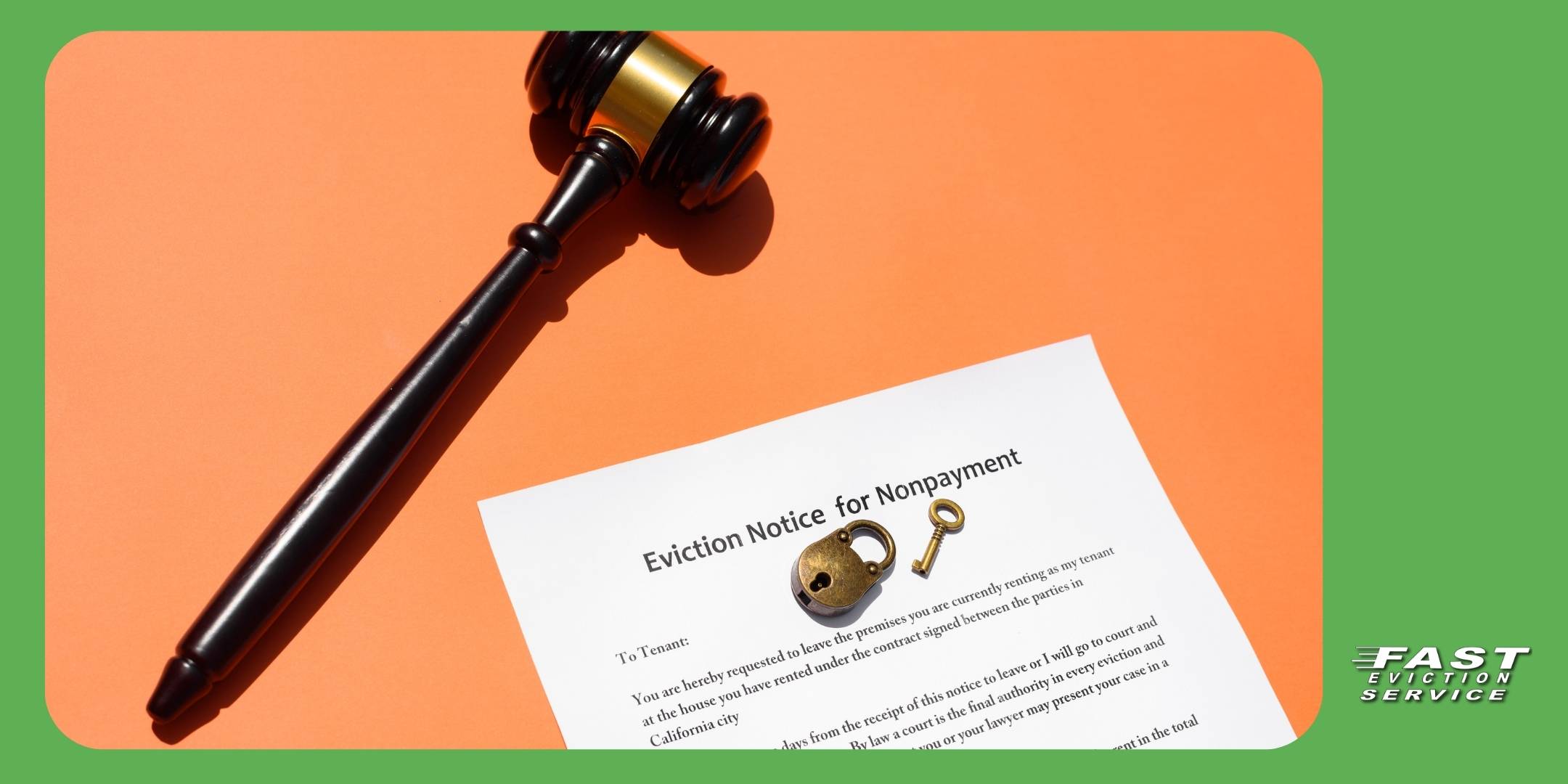In California under certain situations, an Unlawful Detainer may be necessary to evict occupants holding over after the premises are sold. Under CCP § 1161a, Unlawful Detainer proceedings “are expressly designed to determine who has superior title to the property, including the right to immediate possession.”

If you purchase real property at a trustee sale, tax sale, or if you purchase real property with tenants occupying the property this article applies directly to you. For the buyer of the property with tenants the new owner wishes to remove, an Unlawful Detainer action may be initiated for any of these reasons:
Execution sale:
The property has been sold under writ of execution against the occupant (or person under whom the occupant claims) and title under the sale has been duly perfected. [CCP § 1161a(b)(1)]
IRS sale:
While not specifically addressed by CCP § 1161a, there seems little doubt that the purchaser of real property at a sale conducted by the Internal Revenue Service (tax-defaulted properties) would be able to maintain an Unlawful Detainer against the defaulting owner in possession. Such a sale occurs following an administrative levy or writ of execution – similar to what occurs with a sale pursuant to a judicial writ of execution. [CCP § 1161a(b)(1).
POST FORECLOSURE
The property has been sold upon foreclosure against the occupant (or person under whom the occupant claims) and title under the foreclosure has been duly perfected and subsequent purchaser from buyer at foreclosure sale may bring the Unlawful Detainer; trustee’s sale of commercial property terminated tenancy pursuant to lease provision subordinating lease to subsequent trust deeds or mortgages
Code of Civil Procedure § 1161a is primarily intended to facilitate the summary eviction of property owners who unlawfully remain in possession after a voluntary or forced sale (i.e., after title is lost through foreclosure or execution). The statute allows the purchaser to obtain a quick eviction under the Unlawful Detainer procedures for evicting tenants
Flipping real property is a concept that has been around for many years. Generally, the buyer purchases real property at a foreclosure sale or some other type of tax sale, fixes the property and sells the property at, hopefully, a profit.
But what you don’t see is what the buyer does with anyone who is occupying the property.
In the last 30 years there has been the explosion of what some call the “Post foreclosure Unlawful Detainer boom.”
Historically a cause of action for Unlawful Detainer was available only to a landlord against his tenant. The remedy has been expanded by statute to additional categories of plaintiffs (see Code Civ. Proc., § 1161) and defendants (see Code Civ. Proc, § 1161a). The purpose of section 1161a of the Code of Civil Procedure was to make clear that one acquiring ownership through foreclosure, and other forms of forced sale, could also evict by a summary procedure.
There are four basic steps that make for a successful prosecution of a post foreclosure Unlawful Detainer case.
First, of course you need to acquire ownership of the property. This article will not discuss that process. Second, once you acquire the ownership of the property at the trustee sale you then must ascertain if it is tenant or previous owner occupied. Third, once you receive the Deed you will need to record the Trustee’s Deed Upon Sale at the County Recorder’s Office where the real property is located. Fourth, you must serve the proper Notice that informs the occupant of your purchase of the real property and their rights under the statute. You can download the 30-90 Notice to Quit and the cover sheet that goes along with it at fastevcition.com under the Free Eviction Forms Section.
California Law is very clear that if the purchaser of real property can prove the following elements that the purchaser would be entitled to possession of the real property (1) that a trustee’s sale took place pursuant to the provisions of Civil Code Section 2924 et seq.; (2) that the trustee’s deed upon sale was duly perfected; (3) that a Notice to Quit was lawfully served on Defendants; (4) that Defendants did not vacate the subject property after the expiration of the Notice to Quit; and (5) that Defendants have continued in possession of the subject property. Plaintiff would be entitled to a judgment for possession of the subject property as a matter of law and any and all rental damages allowed by law.
A purchaser at a trustee’s sale is entitled to immediate possession of the subject property. The purchaser at a trustee’s sale, its successors and/or assignees in interest, may bring an Unlawful Detainer action against the trustor, or anyone holding possession under the trustor, who refuses to relinquish possession after service of a lawful notice to quit. (Code of Civil Procedure §§ 1161a).
While the process may seem easy in theory, in practice it is often not so easy, and the post foreclosure Unlawful Detainer can drag out due to the defenses that some attorneys employed by the prior owner – or that the current occupants may employ.
Sometimes, the prior owner will argue that the pre-foreclosure process was flawed in some way. While the case law may suggest that the pre-sale process is not relevant to the Unlawful Detainer case some California courts, like the Los Angeles Superior Court, are forcing the Plaintiff to prove up the validity of the pre-sale process. This involves obtaining certified copies of the title documents that were recoded before the sale such as (1) The Deed of Trust that contains the power of sale; (2) the Notice of Default and Election to Sale Under the Deed of Trust; (3) the Notice of Sale; (4) the Trustee’s Deed Upon Sale; (5) the Assignment of the Deed of Trust (if applicable) and (6) the Substitution of Trustee (if applicable
It is best to obtain all of these documents before the Unlawful Detainer action is filed.
If the prior owner of the real property wants to contest the eviction he/she may also file a post foreclosure general civil action seeking a court order to void the sale. Along with this civil action the prior owner may also try to delay the Unlawful Detainer action by attempting to combine the Unlawful Detainer case with the general civil lawsuit which is called a motion to consolidate. In those situations, we advise our clients to oppose that type of delay tactic. This type of delay tactic will increase the costs of the Unlawful Detainer case.
Our office has decades of experience in dealing with this type of delay and has developed a streamline approach for defeating these types of motions.
Our clients are also advised that they will need an experienced attorney who understands the law of post foreclosure civil cases to help the client navigate this process. The attorneys at fastevict.com/fastevictlawgroup.com have years of experiences in representing our clients in these types of general civil actions.
Once the post foreclosure eviction case gets beyond the pre-trial process it will be set for trial where we will prove the basic elements of the Unlawful Detainer case by using the K. I. S. S. method – which means keep it simple and stupid. We always suggest that the client authorizes a trial brief to educate the judge about these types of cases.
Sometimes the property that is purchased at a trustee sale is occupied by a tenant other than the former owner. The tenant will attempt to claim that he/she is a bona fide tenant under California Law and qualifies for a longer notice (90 days) before he/she can be evicted.
This type of defense requires the occupant to show (1) a rental agreement signed before the trustee sale with the former owner that requires payment of fair market rent; (2) payment of rent to the former owner for a period before the trustee sale. This is usually done by the tenant showing rent receipts; (3) a non-familial relationship between the occupant and the former owner. What this means is that the occupant may not be related to the former owner by marriage or birth; and (4) other evidence, like payment of utilities showing a “real” landlord tenant relationship, rather than contrived, with the former owner of the property.
In these types of cases our office recommends pre-trial discovery, like the service of Request to Produce Documents, Interrogatories and Request for Admissions, to ferret out the factual support for the bona fide tenant claim. Again, a trial brief will be recommended to be prepared before trial to educate the trial judge on the law related to those issues.
This type of defense against terminating tenancy after the sale of property can also pose a major problem if the property is located in the City of Los Angeles, California due to that City’s rent control ordinance and in situations where the occupant is claiming that a fixed term lease is involved.



